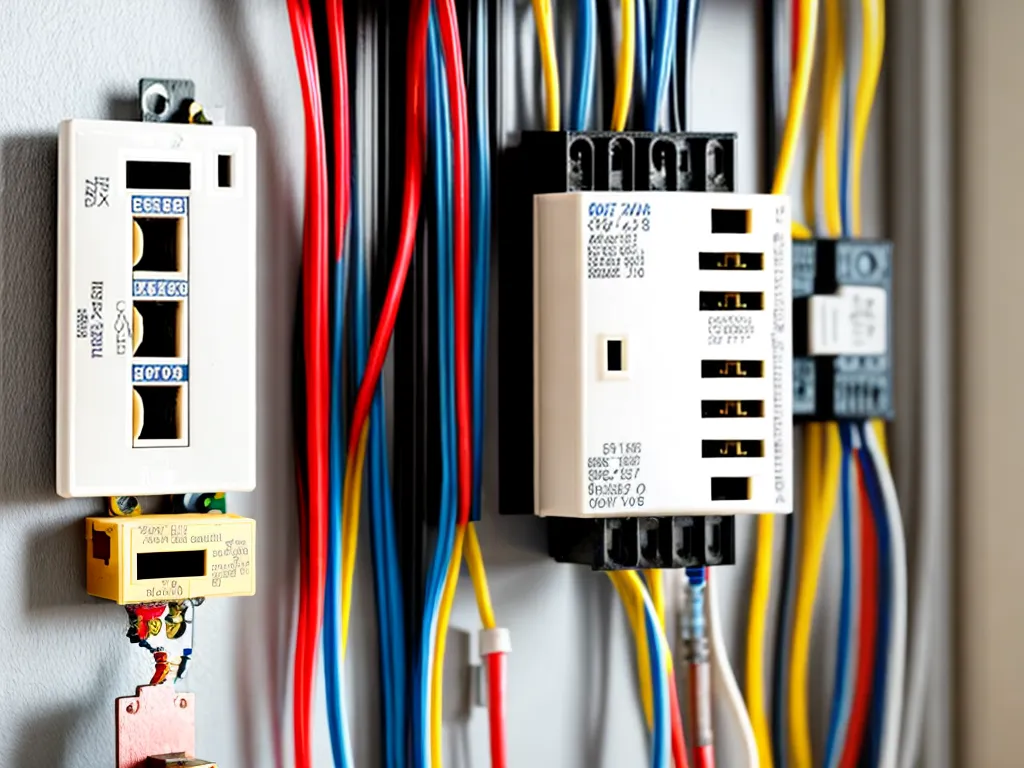
How to Wire Your Home's Electrical System on a Budget
I recently decided to take on the project of wiring my home's electrical system myself in order to save money. As a novice, I learned a great deal about home electrical work through extensive research and some trial and error. Here is my guide on how to wire your home's electrical system on a budget.
Selecting the Right Gauge Wire
Selecting the proper wire gauge is crucial for safety and performance. The gauge refers to the thickness of the wire's conductor.
Some key factors to consider when selecting wire gauge:
- Ampacity - The maximum current a wire can safely carry. Choose a thicker gauge for higher amperage circuits.
- Voltage - Most residential wiring is 120V. Use 12 or 14 gauge for 15A, 120V branch circuits.
- Run Length - Longer wire runs may require a thicker gauge to minimize voltage drop.
- Conductor Material - Copper wiring is ideal. Aluminum is cheaper but more prone to oxidation.
For most 15A, 120V branch circuits, 12 or 14 gauge copper wire will suffice. For the main service panel feeder wires, 6 gauge copper is commonly used.
Choosing the Wiring Method
There are several wiring methods to consider for residential installations:
Nonmetallic Sheathed Cable
Often called Romex, this is a flexible plastic-sheathed cable containing two to four insulated conductors. It is the most common and cost-effective wiring method for indoor residential branch circuits.
Pros:
- Inexpensive
- Easy to install
Cons:
- Not suitable for outdoor or wet locations
Conduit
Metal or PVC conduits physically protect wires routed through them. Conduit allows you to easily replace or add wires.
Pros:
- Durable protection
- Allows modifications
Cons:
- More labor intensive
- More expensive
Armored Cable
BX or MC cable is flexible steel armored cable containing insulated conductors. The metal sheathing is an equipment ground.
Pros:
- Rodent proof
- Durable
Cons:
- Difficult to install around bends
- Only suitable for certain applications
For most residential branch circuits, Romex is the simplest and most cost-effective choice. Use conduit for outdoor, wet, or hazardous locations that require extra protection.
Creating a Circuit Diagram
A detailed circuit diagram is essential to provide a wiring roadmap.
- Show all receptacles, switches, lights, and other connected devices.
- Indicate the wire gauge, number of conductors, and circuit amperage.
- Note important details like GFCI and AFCI protection.
Accurately labeling each circuit at the electrical panel is also extremely important.
Purchasing the Right Materials
After determining your wiring methods, create a bill of materials to purchase everything you'll need:
- Wire - Use the appropriate size and amount for each circuit run. Include extra.
- Boxes - Electrical boxes house wiring connections. Choose suitable sizes.
- Conduit & Fittings - If using conduit, get correctly sized conduit and connectors.
- Breakers - Dual pole for 240V circuits, single pole for 120V. Match amperage.
- GFCI & AFCI Breakers - For protection per code requirements.
- Other items like clamps, screws, connectors, tools.
Shop around for the best prices on quality electrical supplies. Buying in bulk can offer major savings on wire and conduit.
Pulling and Installing the Wires
Carefully pull the wires through the walls and ceilings between boxes. Avoid excessive bending or kinking of the wires. Ensure proper firestopping when penetrating firewalls.
Observe the following guidelines when wiring boxes:
- Leave 6-8 inches of extra wire at connections
- Securely fasten wires with cable clamps
- Carefully strip insulation from wire ends
- Make tight connections and secure appropriately (wire nuts, screws, etc.)
- Follow color coding standards for hot, neutral, and ground wires
Take things slowly and double check your work. Pay close attention to safety.
Connecting Devices and Fixtures
The fun part is installing devices like receptacles, switches, and light fixtures once the wires are pulled.
- Ensure power is off at the main breaker before doing any electrical work
- Use a contactless voltage tester to verify wires are de-energized
- Carefully connect wires per applicable codes
- Secure switches, receptacles, and other devices properly into electrical boxes
- Attach cover plates and light fixtures
- Label everything clearly
Thoroughly test each circuit before completing the installation. Fix any issues.
Inspecting and Testing the Installation
Meticulously inspect the entire installation and test all circuits before putting it into service. Verify:
- All connections are tight and secure
- Proper polarity of receptacles and fixtures
- Grounding continuity
- GFCI and AFCI protection functions properly
- All boxes and covers are installed correctly
- No exposed live conductors
- Wires are protected and routed properly
Making corrections is much easier now rather than later. Don't cut corners.
Completing the Project
With the hard work done, it's very rewarding to turn on the main breaker and have everything function properly. Be sure to:
- Update your home's electrical documentation
- Add circuit labels at the panel
- Leave spare capacity for future expansion
- Install wire/circuit markers to aid future maintenance
The finished product is a safe, high-quality electrical system tailored to your home's needs and budget. While exhausting at times, the experience gained is invaluable.